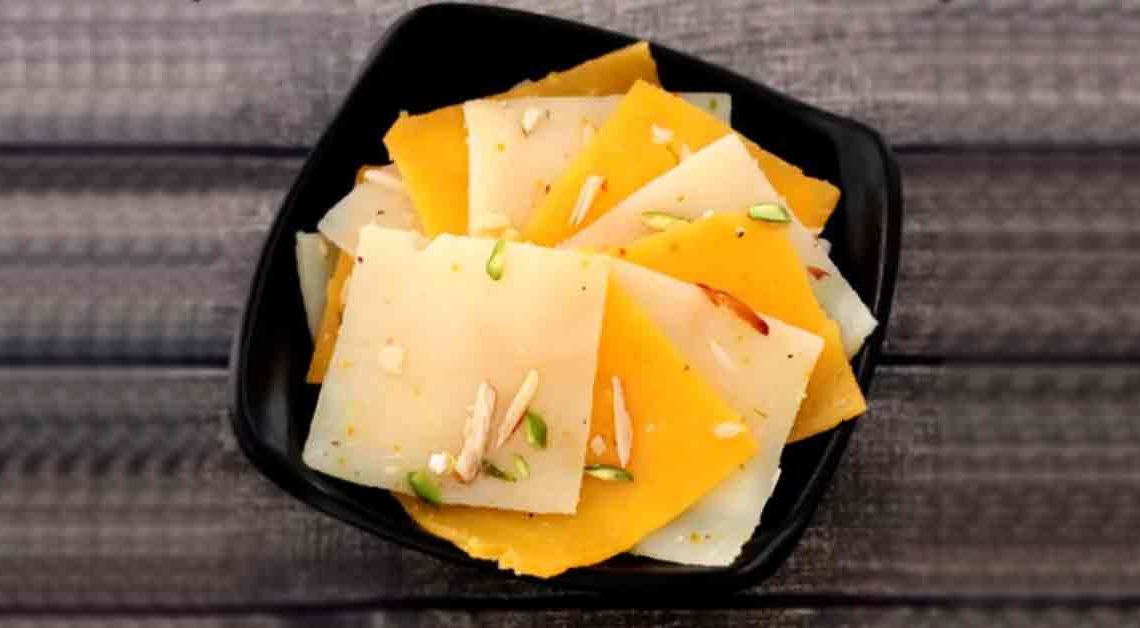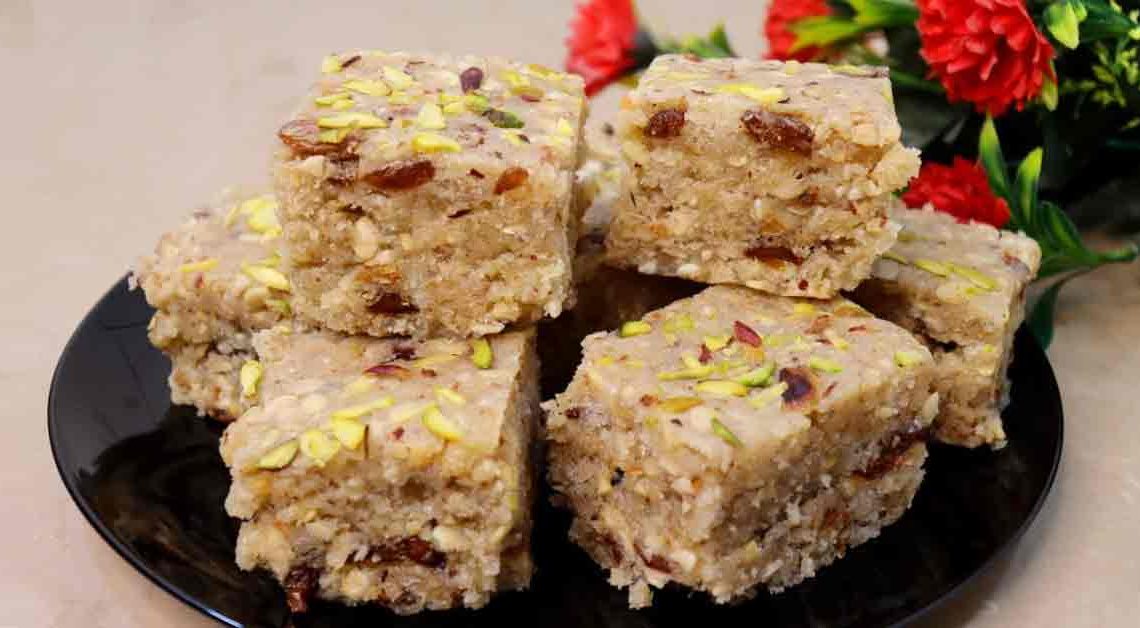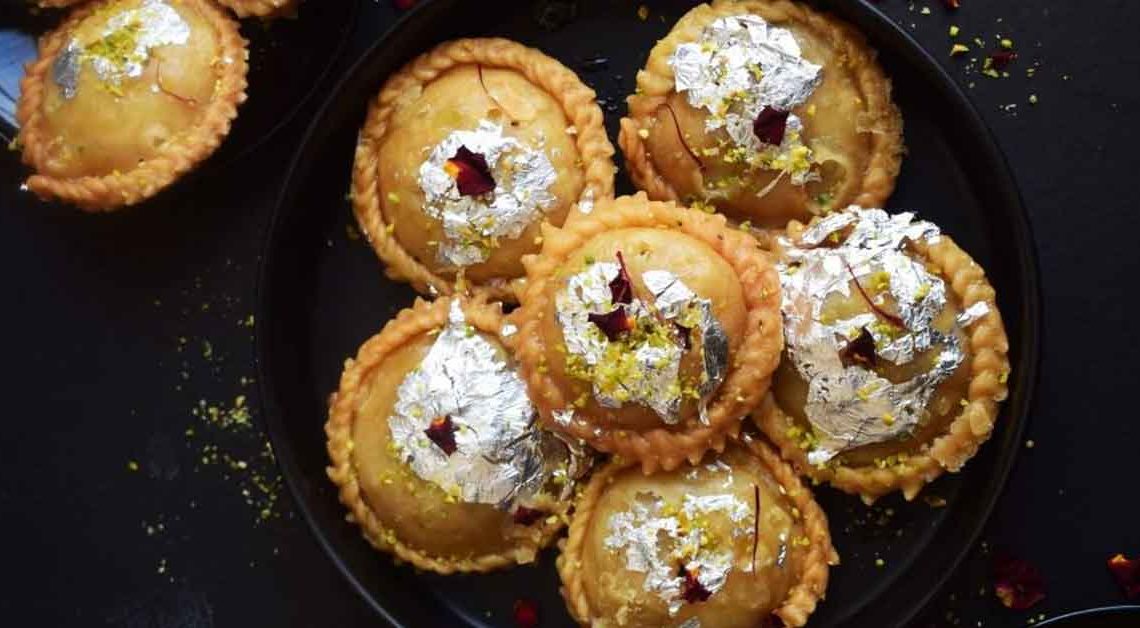Indulging in Mahim Halwa: A Taste of Mumbai’s Sweet Tradition

Welcome to Mithainama! a delightful journey through the streets of Mumbai, where every bite tells a story of cultural heritage and sweet indulgence. Embark with us on a gastronomic adventure as we unravel the secrets behind one of the city’s most treasured desserts – Mahim Halwa.
Imagine strolling along the bustling lanes of Mahim, a vibrant neighborhood in Mumbai, where the aroma of spices and sweetness fills the air. Amidst the chaos and charm lies the legacy of Mahim Halwa, an iconic confectionery that has been enchanting locals and visitors alike for generations.
This melt-in-your-mouth delicacy is more than just a sweet treat; it embodies a rich history and culinary craftsmanship passed down through ages. Made from pure ghee, sugar, and a blend of aromatic spices like cardamom and saffron, is a labor of love that reflects the essence of Mumbai’s diverse culinary heritage.
Prepare to tantalize your taste buds and immerse yourself in the flavors that define Mumbai’s sweet traditions. Get ready to savor every bite of this quintessential delight – Mahim Halwa!
Origin of Mahim Halwa
Mahim Halwa holds a special place in Mumbai’s culinary landscape, tracing its origins back to the historic precincts of Mahim, an area in Mumbai, India. The roots of this delectable sweet can be linked to the 18th century during the rule of the Marathas.
It was introduced by the Sufi saints who resided in the vicinity of Mahim Dargah, a revered Muslim shrine in the area. These saints, known for their piety and charity, created this sweet concoction as a means of sustenance and to serve the devotees who visited the Dargah.
Initially, it was prepared in small quantities, primarily using ghee, sugar, cornflour, and flavored with aromatic spices such as cardamom and saffron. The method of slow-cooking the ingredients to achieve the desired consistency and unique texture became a hallmark of this sweet treat.
History of Mahim Halwa
The history is steeped in tradition and spans several centuries, reflecting the cultural tapestry of Mumbai. This iconic sweet treat has an intriguing tale that intertwines religious influences, artisanal craftsmanship, and the evolution of culinary traditions.
It can be traced back to the 18th century, during the era of the Marathas in Mumbai (then Bombay). The emergence of this delectable dessert is often associated with the Sufi saints who resided near the Mahim Dargah, a prominent shrine in Mahim, Mumbai. These revered saints were known for their philanthropy and community service.
Legend has it that the Sufi saints created it as a simple yet nourishing sweet to offer sustenance to the devotees who visited the Dargah. Initially, it was handmade in small quantities using basic ingredients like ghee (clarified butter), sugar, cornflour, and flavored with aromatic spices such as cardamom, saffron, and sometimes nuts like almonds or pistachios.
Cultural Significance
Mahim Halwa, beyond being a delectable sweet treat, holds profound cultural significance deeply embedded in Mumbai’s heritage. Its cultural importance transcends its taste and preparation, symbolizing tradition, community, and the confluence of diverse influences.
Religious and Spiritual Connections: It is intricately linked to the Mahim Dargah and the Sufi saints who resided there. As a creation believed to have originated from these revered individuals, the sweet carries a spiritual aura, often being associated with religious ceremonies, festivals, and offerings at the Dargah.
Social and Festive Celebrations: It often finds its place in celebrations, festivals, and family gatherings. Its presence in these moments signifies joy, togetherness, and the sharing of sweetness among loved ones.
Touristic and Culinary Appeal: As an iconic Mumbai delicacy, it attracts tourists seeking to explore the city’s rich culinary offerings. It serves as a cultural ambassador, introducing visitors to the authentic flavors and traditions of Mumbai.
Where is Mahim Halwa Famous?
Mahim Halwa is primarily famous and widely recognized in Mumbai, India. It specifically originated in the Mahim neighborhood of Mumbai, hence the name “Mahim Halwa.” The sweet’s roots are deeply intertwined with the history, culture, and traditions of this area, making it an iconic delicacy associated with the city.
While its fame predominantly lies within Mumbai, its reputation as a must-try delicacy has extended beyond the city’s boundaries. Tourists, food enthusiasts, and individuals with a penchant for exploring regional cuisines often seek out during their visits to Mumbai, making it a sought-after culinary experience.
Outside of Mahim, some sweet shops and confectioneries in Mumbai might also offer this delicacy to cater to the demand of locals and tourists interested in experiencing the city’s authentic flavors.
However, despite its popularity in Mumbai, it might not be as widely recognized or available in other parts of India or internationally, as its production is often localized to specific establishments with a historical connection to the Mahim neighborhood.
Interesting Facts and Trivia
Certainly! Here are some intriguing facts and trivia related to Mahim Halwa:
- It is believed to have originated around the 18th century near the Mahim Dargah in Mumbai, closely associated with Sufi saints who prepared it as a nourishing treat for devotees visiting the shrine.
- Crafting halwa is considered an artisanal skill passed down through generations. The artisans who create this sweet have often honed their expertise over years, preserving the traditional methods to maintain its authentic taste and texture.
- It is not just a dessert; it holds cultural significance in Mumbai. It is associated with religious ceremonies, festivals, and offerings at the Mahim Dargah, showcasing its spiritual connection.
- Despite its religious origins, it has become a unifying factor among diverse communities in Mumbai, appreciated and savored by people from various backgrounds, showcasing unity through shared culinary appreciation.
- Due to its historical significance and unique taste, it attracts tourists and food enthusiasts eager to explore Mumbai’s culinary heritage, making it a sought-after delicacy for those visiting the city.
Did You Know?
Did you know that Mahim Halwa, besides being a delightful dessert, also offers several potential health benefits when consumed in moderation?
- Mahim Halwa, being made primarily from ghee and sugar, provides a quick source of energy. It can offer a burst of vitality, making it a favorable option for a quick energy boost.
- Ghee used in the preparation contains fat-soluble vitamins like A, E, and K. These vitamins play vital roles in maintaining healthy vision, skin, and overall immunity.
- Certain spices like cardamom and saffron used have digestive properties. Cardamom aids digestion and helps in relieving gastrointestinal issues, while saffron is believed to promote digestion.
- Saffron, a key ingredient in Mahim Halwa, is known for its potential to enhance mood and alleviate stress. Consuming it in small quantities may contribute to improving mood and reducing anxiety.
- Some ingredients such as saffron and nuts like almonds or pistachios, contain antioxidants. These compounds help in fighting free radicals, reducing oxidative stress, and supporting overall health.







